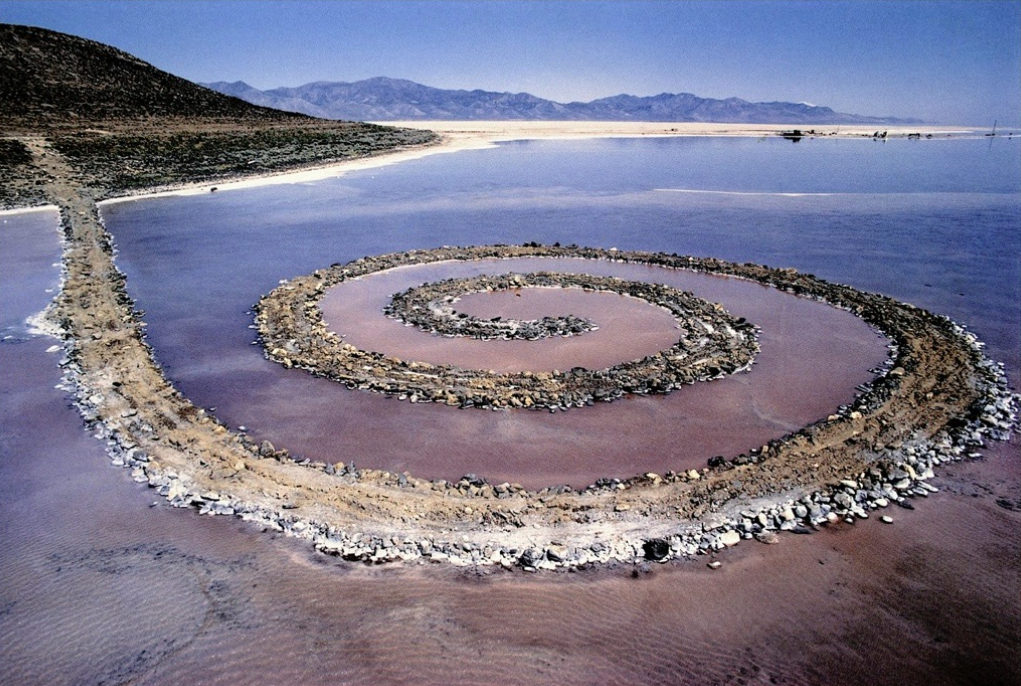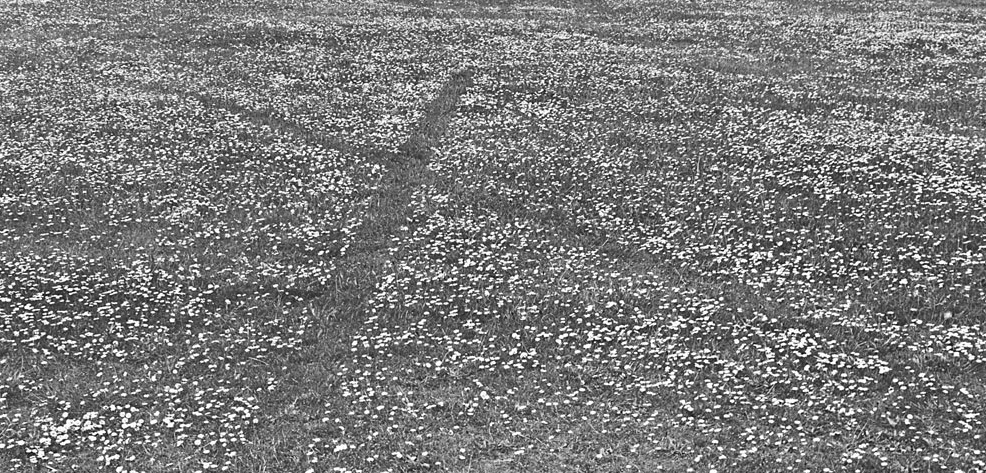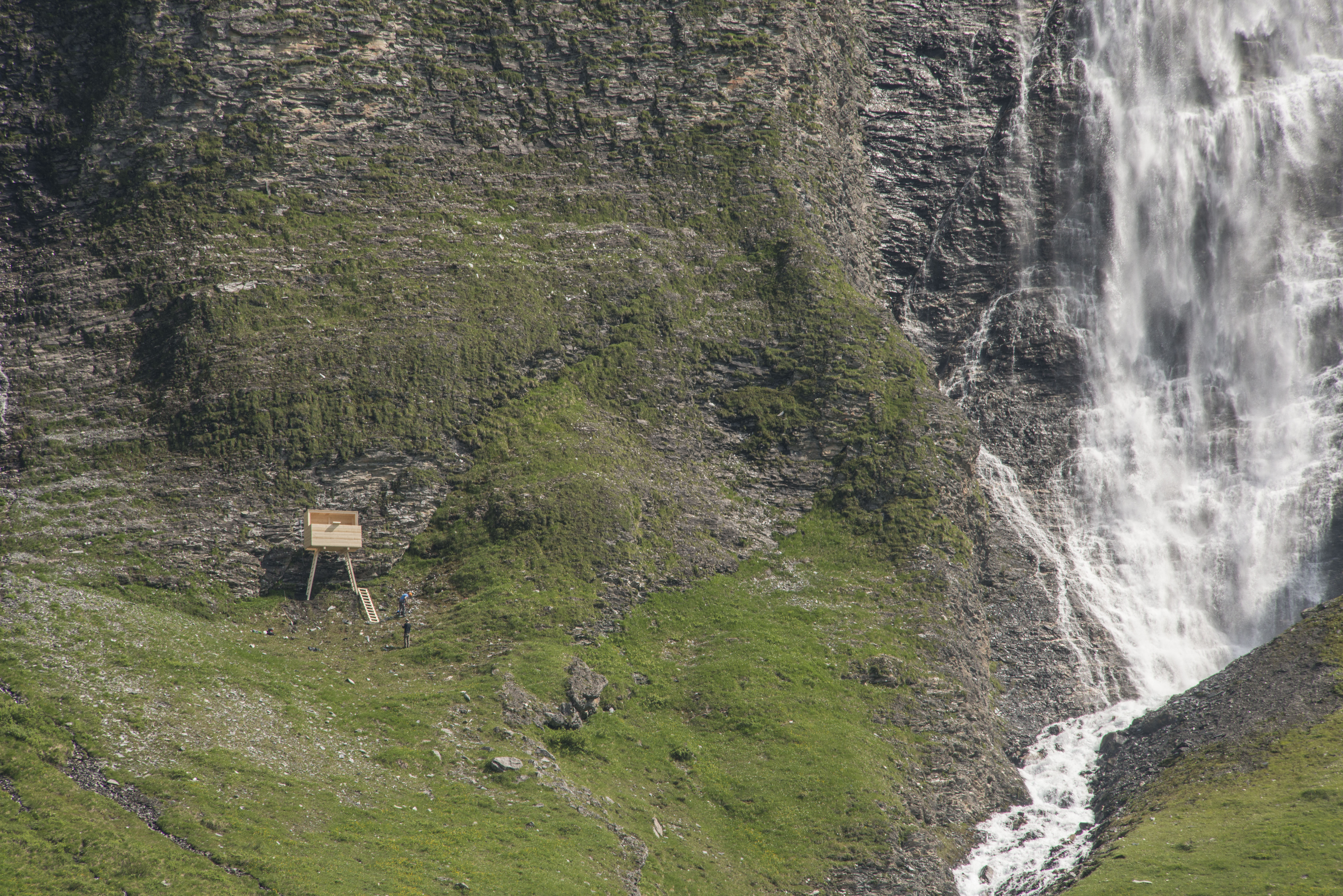Land & Environmental Art
Land and Environmental Art is art, that is created in and with nature and is also partly presented in it. Its predecessors are Earth Art (60s), Land Art (70s) and Eco Art (since the late 60s). Its central themes are nature in general, biodiversity, climate and sustainability. These projects address ecological, political, social and systemic concerns. They are usually site-specific and have evolved from sculptural to processual, conceptual and transdisciplinary forms.

Agnes Denes: Wheatfield – A Confrontation: Battery Park Landfill Manhattan NY (1982)
What is Land Art? Alternatively referred to as Earthworks, Earth Art and Land Art, in the 1960s and 70s, there emerged an aggregation of novel artistic practices keyed to the natural landscape. Located outside the mainstream art making and institutions, these practices challenged the ideas associated with art making, aesthetic categories and location.
 Robert Smithson: Spiral Jetty, 1970 (Great Salt Lake, Utah)
Robert Smithson: Spiral Jetty, 1970 (Great Salt Lake, Utah)
Land Art began as an American phenomenon, represented by artists such as Michael Heizer, Nancy Holt, Robert Smithson, and Walther De Maria, only later spreading to Great Britain and continental Europe. As a way of avoiding traditional painting or sculpture, Land artists turned to the medium of landscape, using the earth as canvas and exploring caterpillars and bulldozers as artistic tools. Unlike its direct predecessor Arte Povera and Minimalism, Land Art privileged the natural habitat rather than the space of a conventional gallery. These early artworks — trenches, mounds, rocks, and excavations — demanded an open space and sense of scale unachievable in the city.
 Richard Long: Sculpture, England, 1968
Richard Long: Sculpture, England, 1968
While Land artists understood themselves as explorers of the remote, vast landscapes of American deserts which became sites for their art, questioning the established perceptions of locality, objecthood, density, mass, and scale. Both historic and current present Land Art engages with the understanding of landscape not only as the earth’s physicality but also with the physiology and psychology of the viewer—a beholder and participant.
Literature:
– AMO/Rem Koolhaas: Countryside A Report, Guggenheim Taschen, 2020
– Andrea Brown: Art & Ecology Now, Thames & Hudson, 2014
– T.J. Demos, Emily Eliza Scott, Subhankar Banerjee (Ed.): The Routledge Companion to Contemporary Art, Visual Culture, and Climate Change, Routledge, 2021
– Barnaby Drabble (Ed.): Along Ecological Lines. Contemporary Art and climate crisis, Gaia Project Press, 2019
– Earth Beats (Ausstellungskatalog), Kunsthaus Zürich, 2021
– Maja and Reuben Fowkes (Ed.): Art and Climate Change (World of Art), Thames and Hudson, 2022
– Johannes M. Hedinger / Hanna Hölling (Ed.): LANDSCAPE #1. Institute for Land and Environmental Art, Vexer Verlag St.Gallen/Berlin, 2020
– Jeffrey Kastner, Brian Wallis: Land and Environmental Art. Phaidon, Boston, 1998.
– Philipp Kaiser, Miwon Kwon: Ends of the Earth: Land Art to 1974, Prestel München, 2012.
– Anne Kersten: Kunst und Landwirtschaft: Realitätsbezüge in der Gegenwartskunst. Transcript, 2021
– Bruno Latour / Peter Weibel (Ed.): Critical Zones: The Science and Politics of Landing on Earth, MIT Press 2020
– Lucy R. Lippard: Undermining, The New Press, 2014
– Timothy Morton: All Art is Ecological, Green Ideas, Penguin Books, 2021
– Thomas Oberender (Ed.): Down to Earth. Entwürfe für eine Kultur der Nachhaltigkeit, Spector Books, 2021
– Myvillages (Ed.): The Rural, Documents of Contemporary Art, MIT Press, 2019

Com&Com: Bergkanzel, Art Safiental 2016
